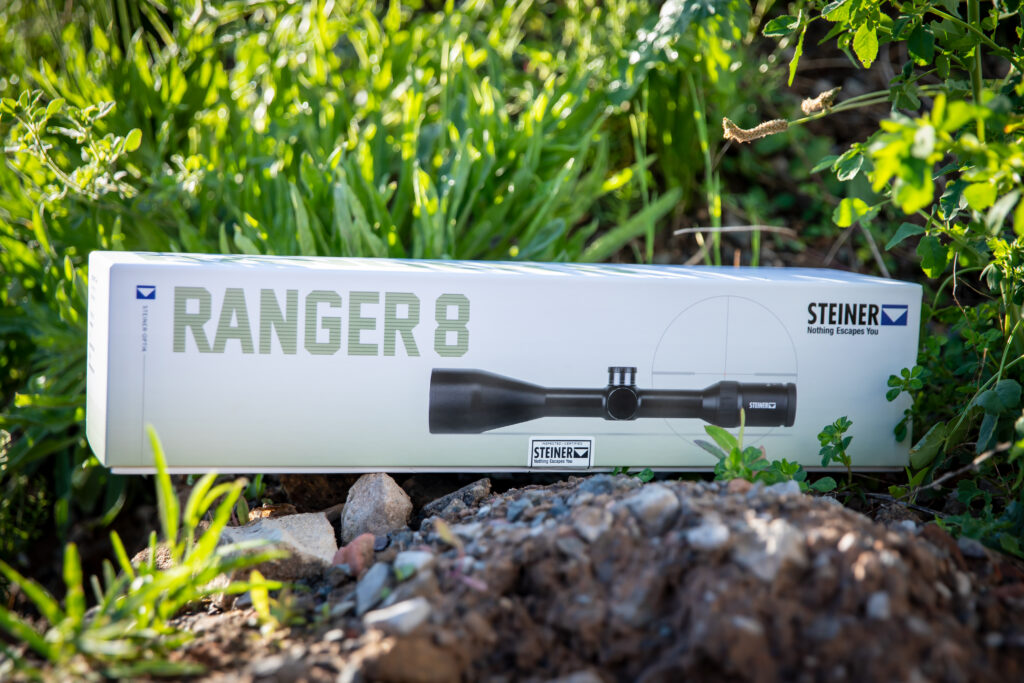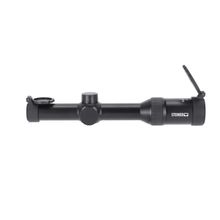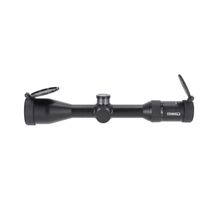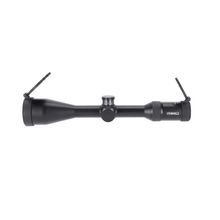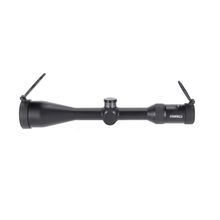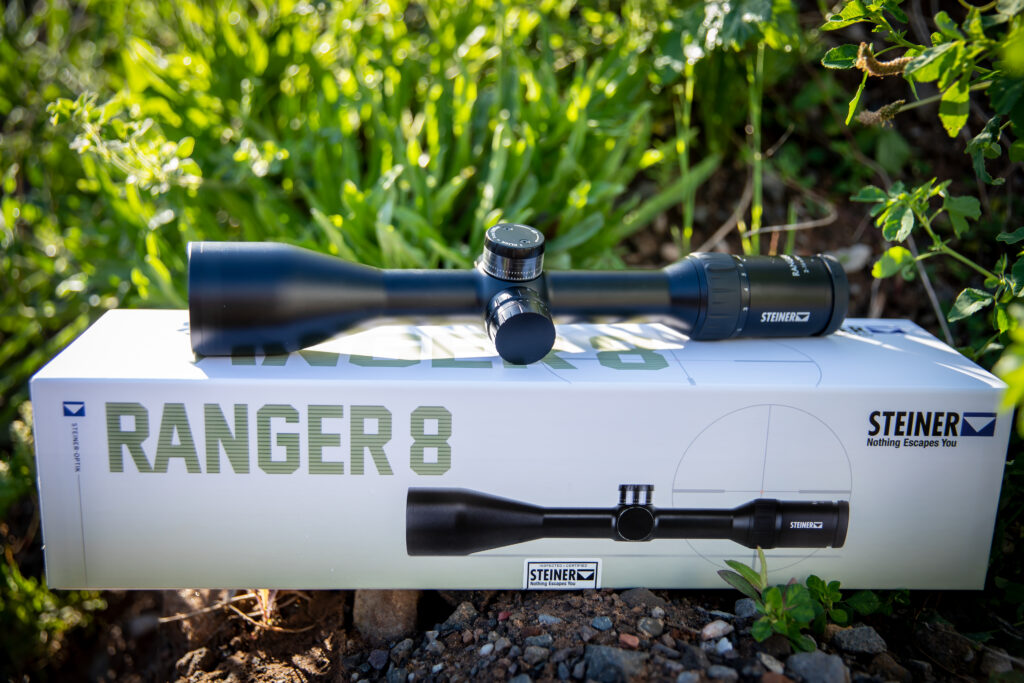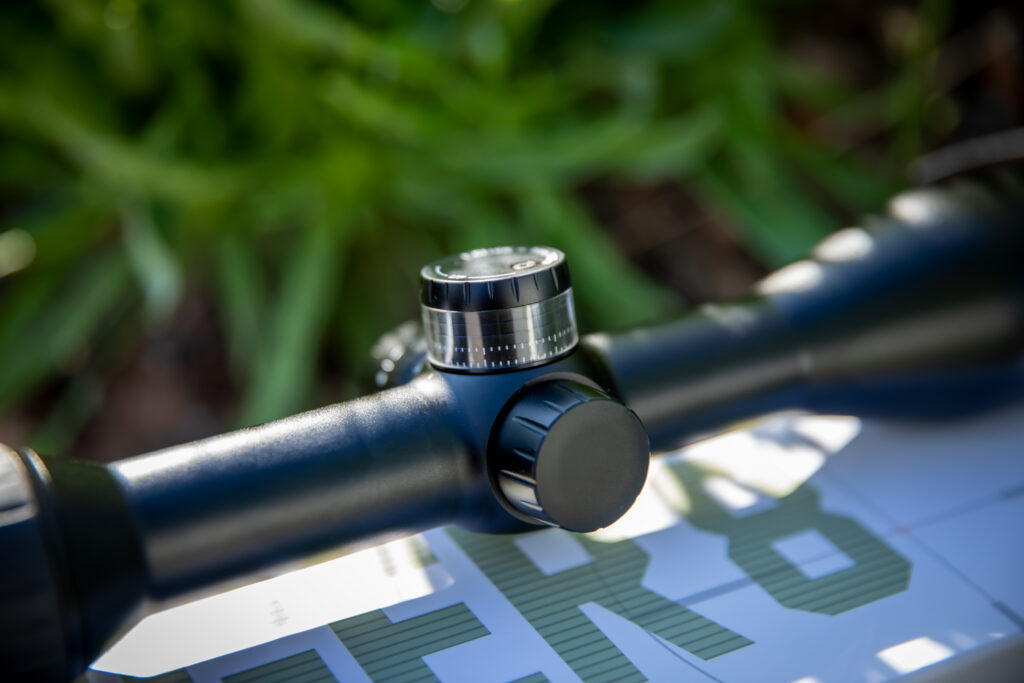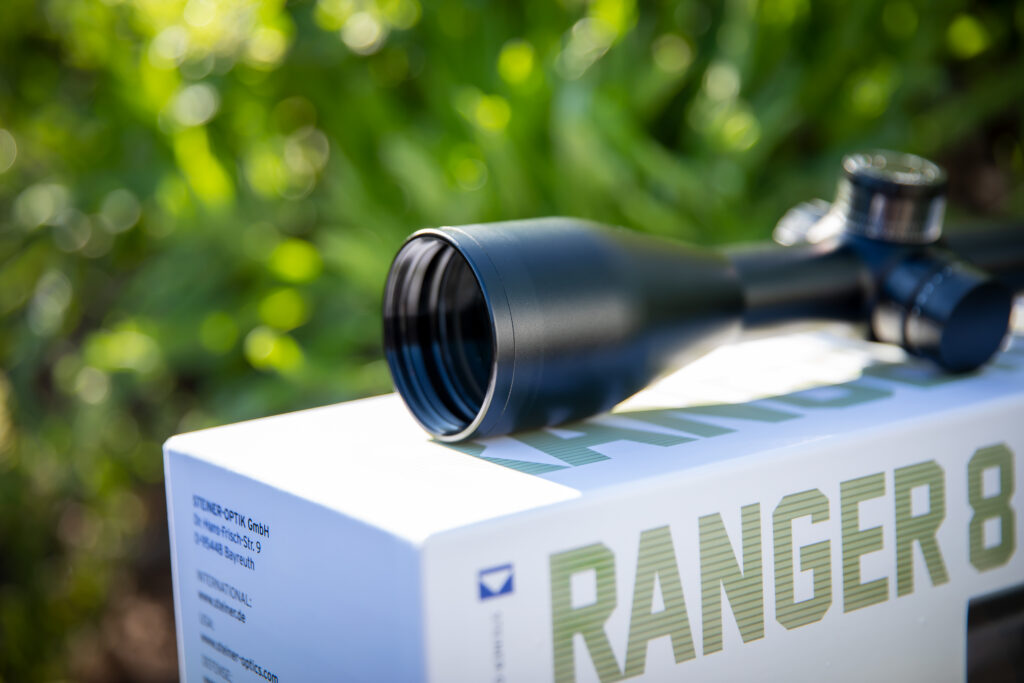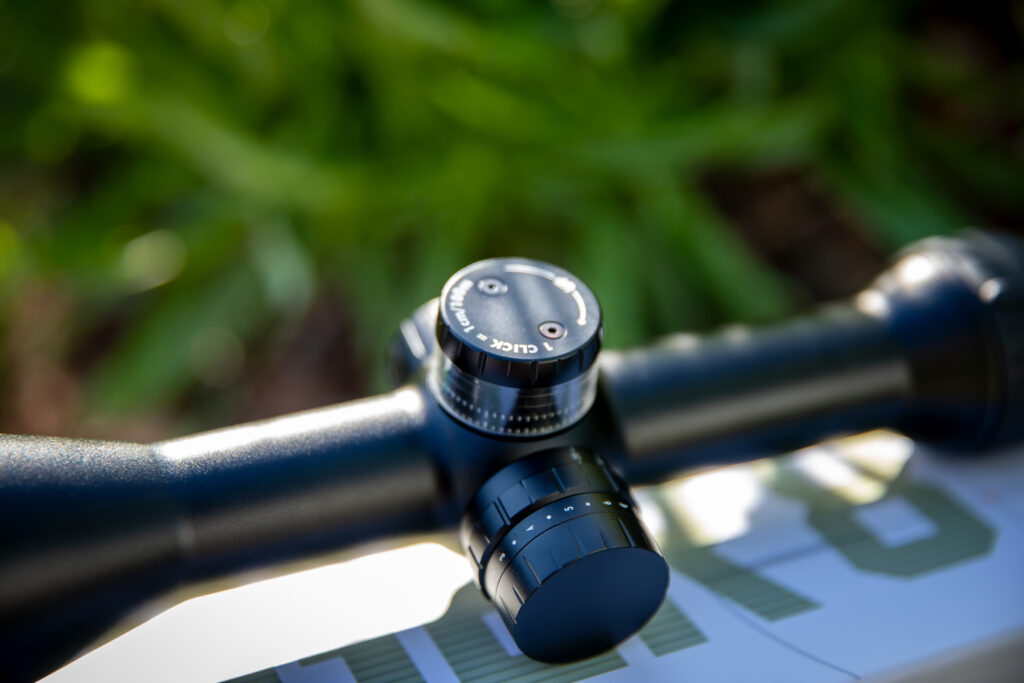Due to the success story of the Steiner Ranger 4 and 6 series, Steiner has now decided to produce a Ranger 8 series. This corresponds to the ravages of time, as flexibility is known to be the be-all and end-all in hunting. The new series promises to cover the widest possible areas while granting a reasonable price. Since its release, the Steiner Ranger series has continued to evolve and improve. This is also evident in the new products in the field of digital and analog optics. Steiner has years of experience in the manufacture and distribution of optical equipment, which leads to the success of the products. Being aware of this know-how, we decided to test the new riflescope series exclusively for you. Here, the 2-16x50BT had to prove itself for our test.
-
Steiner Ranger 8 1-8x24 Zielfernrohr ✓ Kauf auf Rechnung, Finanzierung oder Ratenkauf möglich ✓ Schneller Versand ✓ TOP-Preis ✓ Fachberatung
Das Steiner Ranger 8 1-8x24 Zielfernrohr ist das perfekte Zielfernrohr für das flüchtige Schießen wahrend der Drückjagd, dank eines kristallklaren Leuchtpunktes und einer leichten Bauweise. Es besticht durch ein erweitertes Sehfeld, eine gewohnt ... weiterlesen
- Bildebene: 2. Bildebene
- Gewicht ca.: 510 g
- Mittelrohr-Ø: 30 mm
- Vergrößerung: 1x - 8x
- Objektivdurchmesser: 24 mm
- Zoomfaktor: 8x
- Klickverstellung: 1 cm
- Austrittspupille bei min./max. Verg. (mm): 8,5 - 3 mm
- Dioptrienausgleich dpt: +2 bis -3
- Sehfeld bei min./max. Vergr. auf 100 m: 37,8 - 4,73 m
- Gesamtlänge: 290 mm
- Absehen: 4A-I
- Transmissionsgrad: 92%
- Anwendung: Drückjagd
- Ausstattung: Leuchtpunkt
- Serie: Ranger 8
1509,00 EURZum Produkt
-
Steiner Ranger 8 2-16x50 Zielfernrohr ✓ Kauf auf Rechnung, Finanzierung oder Ratenkauf möglich ✓ Schneller Versand ✓ TOP-Preis ✓ Fachberatung
Das Steiner Ranger 8 2-16x50 Zielfernrohr ist ein elegantes Zielfernrohr, das seine Stärken besonders bei der Pirschjagd am Tag oder in der Dämmerung unter Beweis stellt. Es besticht durch ein erweitertes Sehfeld, eine gewohnt hohe Lichttransmissio ... weiterlesen
- Bildebene: 2. Bildebene
- Gewicht ca.: 660 g, 684 g
- Mittelrohr-Ø: 30 mm
- Vergrößerung: 2x-16x
- Objektivdurchmesser: 50 mm
- Zoomfaktor: 8x
- Klickverstellung: 1 cm
- Austrittspupille bei min./max. Verg. (mm): 8,5 - 3,1 mm
- Dioptrienausgleich dpt: -3 bis +2
- Sehfeld bei min./max. Vergr. auf 100 m: 18,92 - 2,37 m
- Gesamtlänge: 345 mm
- Absehen: 4A-I
- Transmissionsgrad: 92%
- Anwendung: Ansitz, Pirsch
- Ausstattung: Ballistikturm
- Serie: Ranger 8
1549,00 EURZum Produkt
-
Steiner Ranger 8 3-24x56 Zielfernrohr ✓ Kauf auf Rechnung, Finanzierung oder Ratenkauf möglich ✓ Schneller Versand ✓ TOP-Preis ✓ Fachberatung
Das Steiner Ranger 8 3-24x56 Zielfernrohr ist ein leistungsstarkes Zielfernrohr, das sich durch seine vielseitige Einsatzfähigkeit und hohe Lichttransmission auszeichnet. Es ist ein wirklicher Allrounder mit beeindruckender optischer Leistung in her ... weiterlesen
- Bildebene: 2. Bildebene
- Gewicht ca.: 730 g, 774 g
- Mittelrohr-Ø: 30 mm
- Vergrößerung: 3x-24x
- Objektivdurchmesser: 56 mm
- Zoomfaktor: 8x
- Klickverstellung: 1 cm
- Austrittspupille bei min./max. Verg. (mm): 8,5 - 2,3 mm
- Dioptrienausgleich dpt: -3 bis +2
- Sehfeld bei min./max. Vergr. auf 100 m: 12,6 - 1,6 m
- Gesamtlänge: 375 mm
- Absehen: 4A-I
- Transmissionsgrad: 92%
- Anwendung: Ansitz, Nachtjagd
- Ausstattung: Ballistikturm
- Serie: Ranger 8
1589,00 EURZum Produkt
-
Steiner Ranger 8 4-32x56 BT Zielfernrohr ✓ Kauf auf Rechnung, Finanzierung oder Ratenkauf möglich ✓ Schneller Versand ✓ TOP-Preis ✓ Fachberatung
Das Steiner Ranger 8 4-32x56 BT Zielfernrohr ist das ultimative Werkzeug für Long-Range-Schützen. Ein hoher Vergrößerungsverstellbereich gepaart mit herausragender Detailerkennung ermöglicht hochpräzise Schüsse bei weiten Distanzen. Es bestich ... weiterlesen
- Bildebene: 2. Bildebene
- Gewicht ca.: 774 g
- Mittelrohr-Ø: 30 mm
- Vergrößerung: 4x-32x
- Objektivdurchmesser: 56 mm
- Zoomfaktor: 8x
- Klickverstellung: 1 cm
- Austrittspupille bei min./max. Verg. (mm): 8,5 - 1,7 mm
- Dioptrienausgleich dpt: -3 bis +2
- Sehfeld bei min./max. Vergr. auf 100 m: 9,46 - 1,18 m
- Gesamtlänge: 385 mm
- Absehen: 4A-I
- Transmissionsgrad: 92%
- Anwendung: Bergjagd, Long Range
- Ausstattung: Ballistikturm
- Serie: Ranger 8
1799,00 EURZum Produkt
Variants of the scopes
In advance, we would like to explain which scopes are available and what purpose they should serve. We would like to provide you with a brief overview of this.
The new riflescopes are launched in the following variants:
- The driven hunt specialist 1-8×24: the riflescope has a field of view of 37.8m – 4.7m. This is quite respectable, as the field of view of riflescopes with a high zoom factor is usually somewhat smaller.
- The all-rounders 2-16×50 and 2-16×50 BT: From the use of attachments or eyepiece-side night vision devices to moving shots, this riflescope covers the widest range.
- The 3-24×56 and 3-24×56 BT sitting and night hunting specialists: there are still countries where you are not allowed to hunt with technology. This is where this riflescope is of the utmost importance, playing up its light gathering power of the 56 objective.
- The hunting long-range specialist 4-32×56 BT: The riflescope in this version is very well suited for long shots in the mountains, for example.
| Ranger 8 | Magnification | Field of view at 100 m | Exit pupil | Parallax-free | Lens outer diam. | Length | Weight | Reticle |
| 1-8×24 | 1-8x | 37,8 – 4,73 m | 8.5 – 3 mm | 100 m fixed | 30 mm | 290 mm | 510 g | 4A-I |
| 2-16×50 2-16×50 BT | 2-16x | 19,92 – 2,37 m | 8.5 – 3.1 mm | 20 m (y) – infinite | 57.2 mm | 345 mm | 660 g 684 g | 4A-I |
| 3-24×56 3-24×56 BT | 3-24x | 12,6 – 1,6 m | 8.5 – 2.3 mm | 20 m (y) – infinite | 64 mm | 375 mm | 730 g 774 g | 4A-I |
| 4-32×56 BT | 4-32x | 9,46 – 1,18 m | 8.5 – 1.7 mm | 20 m (y) – infinite | 64 mm | 385 mm | 774 g | 4A-I |
All glasses have a click adjustment of 1 cm on 100 m, with this measure you can manage very well. The series comes with one reticle, the 4A-i, which provides very little target coverage as usual.
For the riflescopes 2-16×50 and the 3-24×56 you can order the ballistic turret (BT) for an additional charge. This reticle quick adjustment is very useful when hunting at a longer distance. As long range sport shooting is becoming more popular, these scopes can also be used for this range in a limited way. However, it must also be noted that the reticle is in the 2nd image plane and this is only available as a 4A-i.
The absolute long range top contender in this series is the Ranger 8 4-32×56. However, since these glasses are very highly coated, they can also be used very well as a spotting scope in everyday hunting. This variant is then always supplied as a BT version.
Scope of delivery
Since we have taken a closer look at the 2-16×50 BT for you, we will first describe the scope of delivery. The glasses are delivered in a cardboard box, in which they are protected from shocks by foam. A CR2032 battery, a lens protector and an eyepiece protector are supplied from the factory. Furthermore, a detailed user manual and 2 flip-up covers are included.
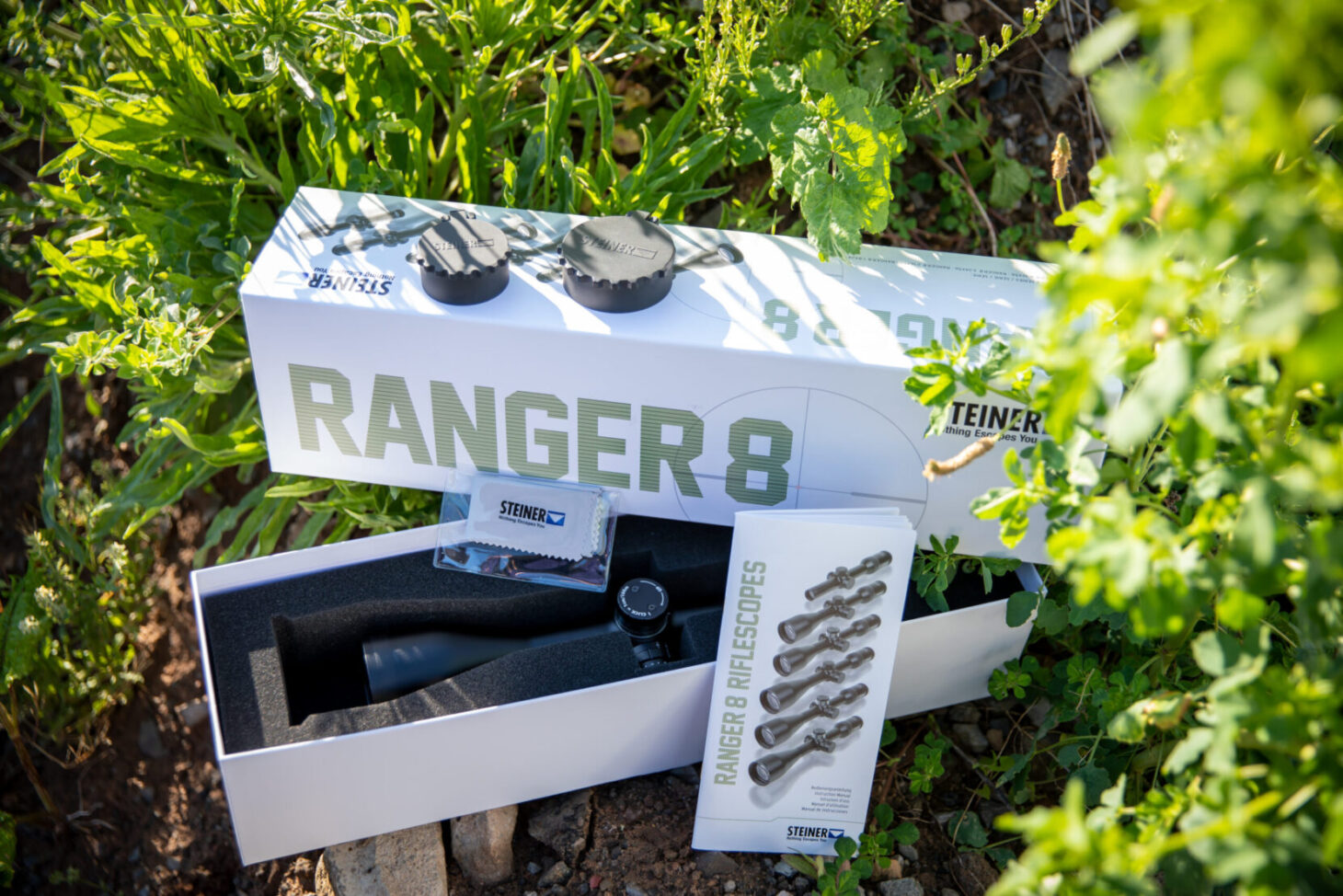
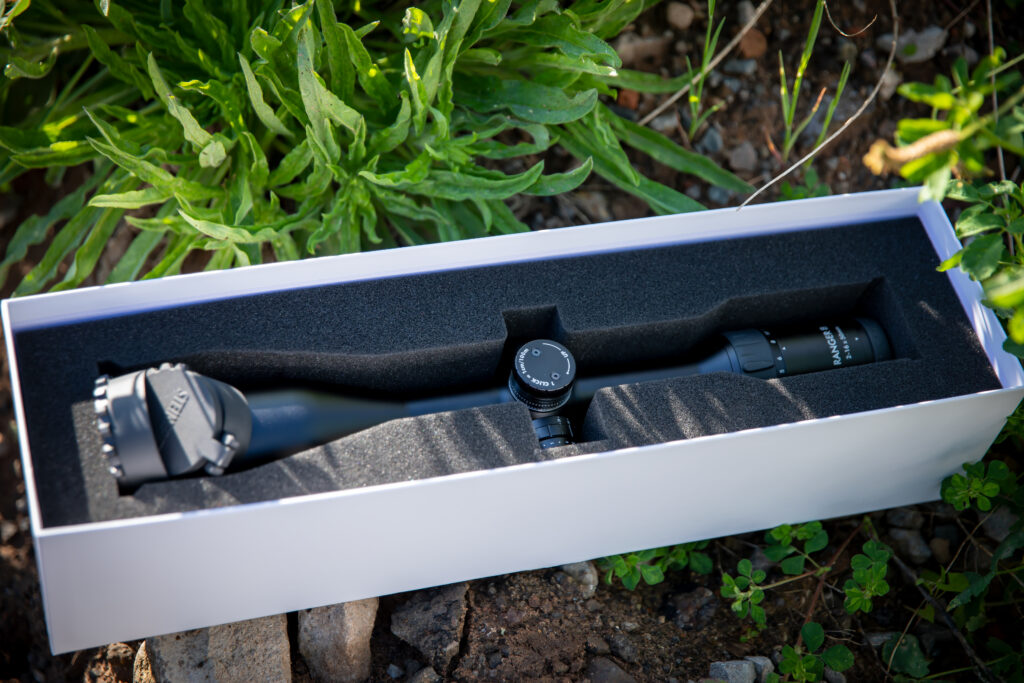
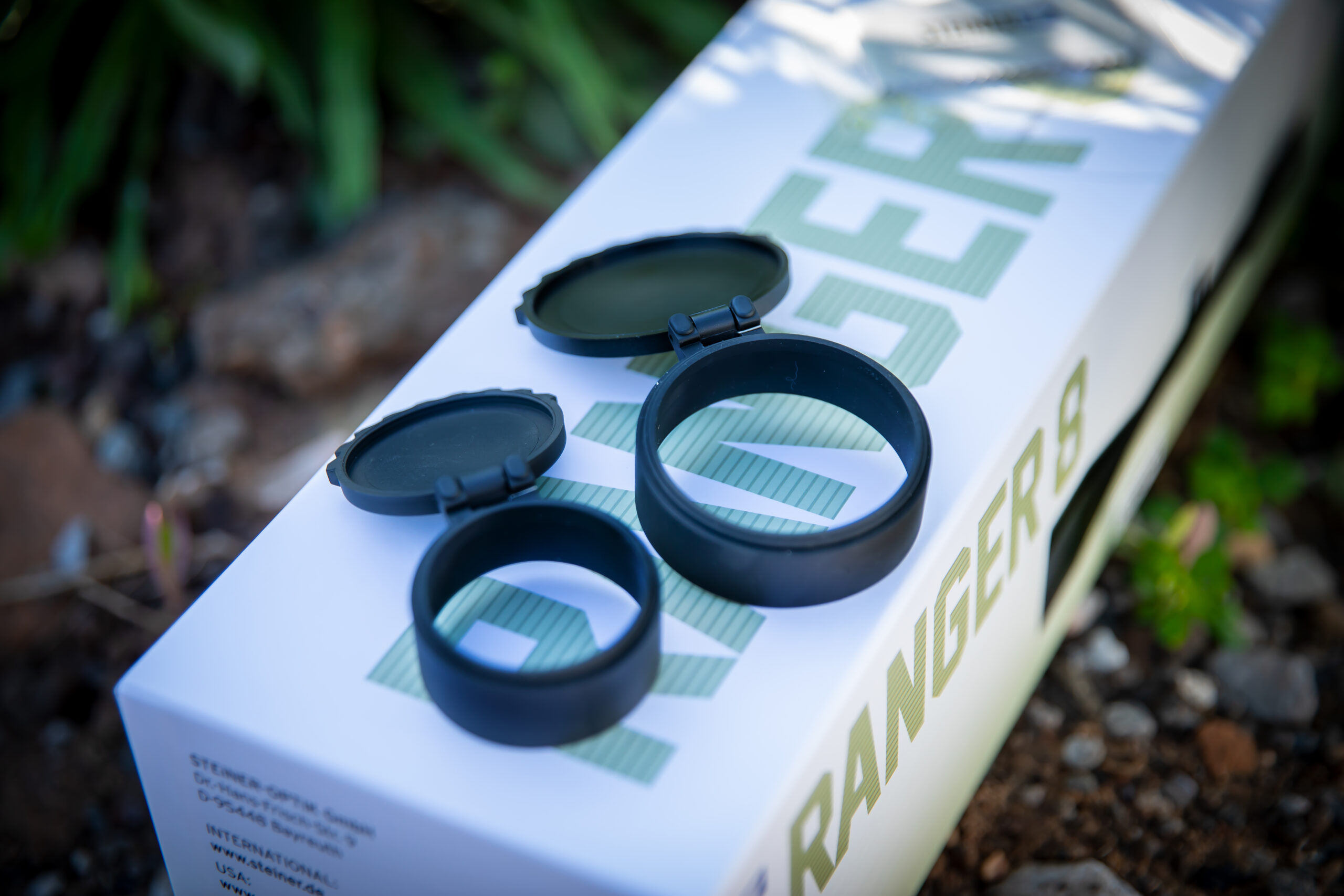
First impression
The first impression is thoroughly positive. The scopes make a very high-quality impression, even when opening the packaging. The anodizing is black, which gives the scope a visual, high-quality impression. At the same time, this also ensures that the scope is less susceptible to scratches and dirt. Already in the previous Ranger 4 and Ranger 6 series, the anodization was greatly improved, as there were complications here initially. However, the Bayreuth-based company has this fully under control with the new Ranger 8 series.
Parallax compensation
Starting with the 50 lens diameter, all lenses come with parallax compensation, which is always needed even with such a large zoom factor and the resulting magnification. The advantage here is that even at high magnification, for example, the target object is displayed extremely sharply. Another advantage is that this is ideal for use with eyepiece-side night vision attachments. During this process, the reticle is filmed, so it is good that this is very fine. With a parallax compensation, the desired depth of field comes into the image. This starts at 20 m and goes to infinity, which is very conducive to the razor-sharp image at any distance. In our test scope, it runs very well and can also be adjusted quite cleanly. The scopes that come without adjustable compensation are parallax-free at 100 meters.
Mounting and center tube diameter
All new Ranger R8 series riflescopes come with a 30mm tube, which greatly aids mounting. In the hunting field, a center tube diameter of 30 mm has become established. Thus, the scopes can be installed on all common weapon models and mounting variants.
Diopter adjustment
The ring on the eyepiece for diopter adjustment is rubberized, runs very well and can be adjusted without play. Here, a visual impairment of -3/+2 diopters can be compensated. The + and – range is described on the rubber coating of the adjustment ring. The advantage of the rubber coating turns out in practice and comes into play especially with large calibers, should you be in the heat of the battle with the eye closer to the scope and get this in the recoil.
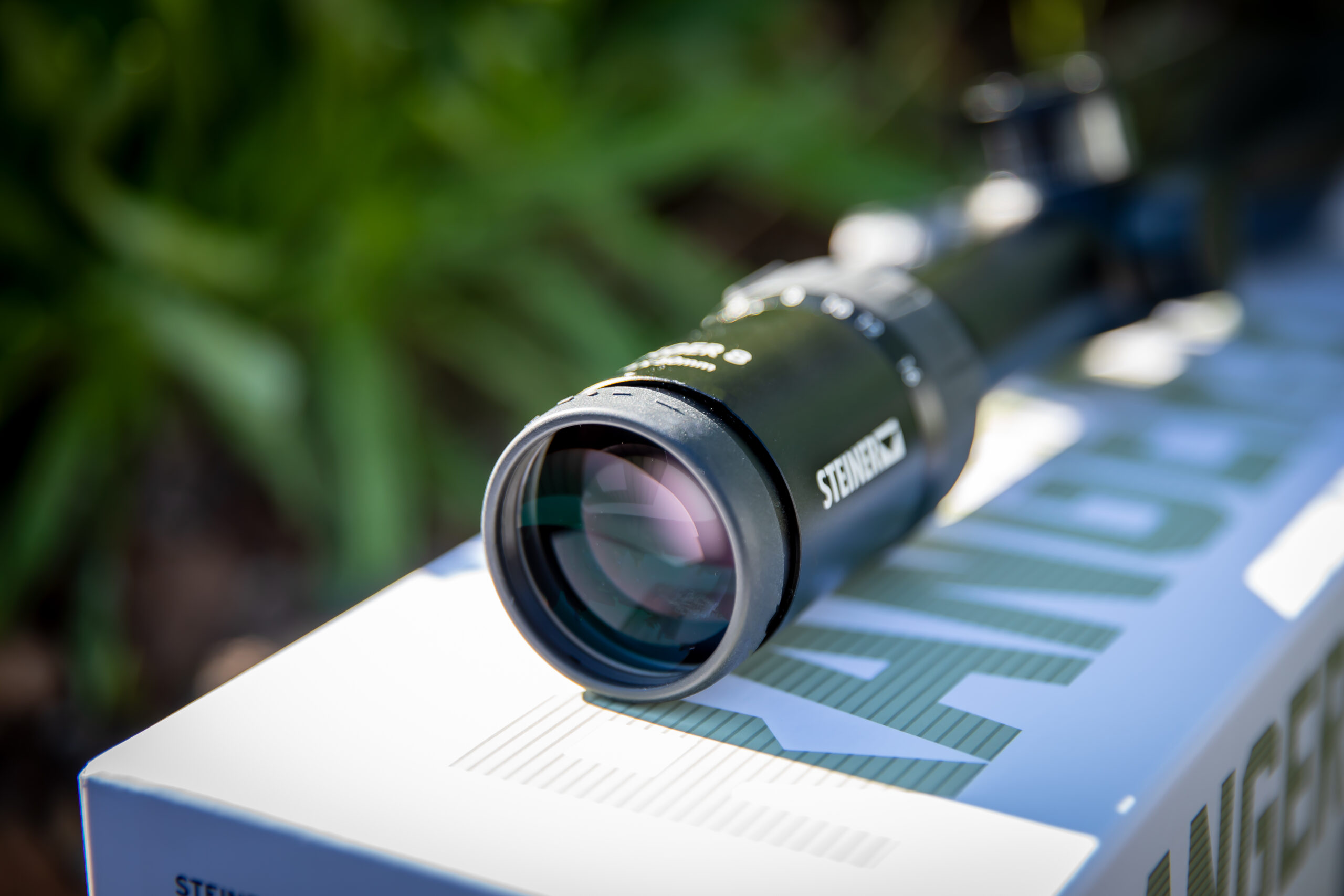
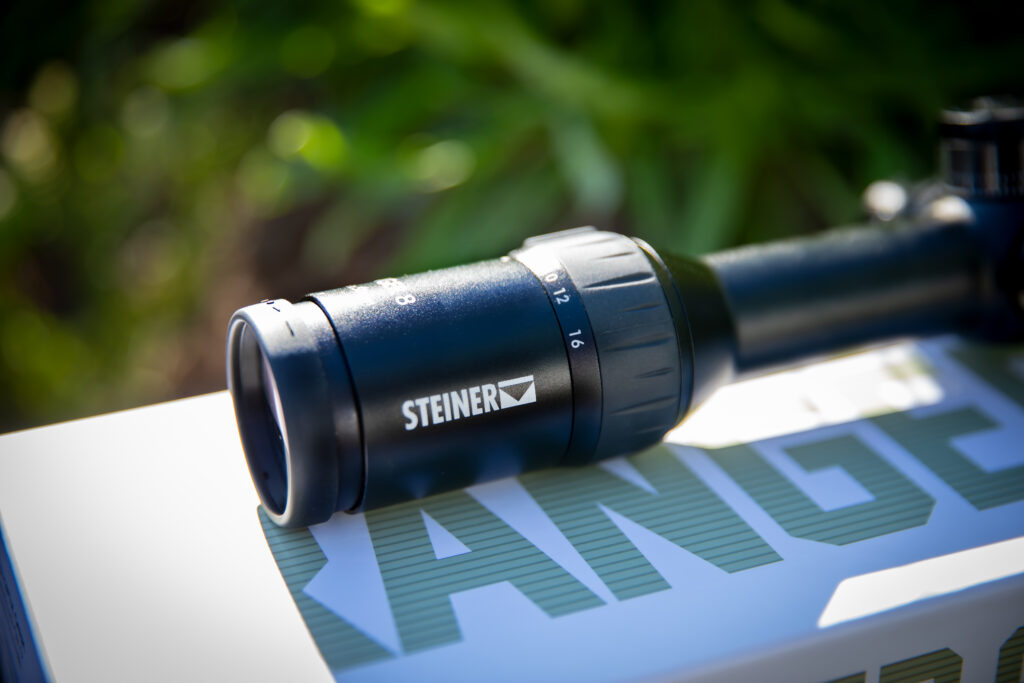
Reticle and illuminated dot
Like its predecessors, the reticle of the riflescopes already covers very little of the target, which is especially important when hunting. Since the reticle is very fine, it is difficult to see in the twilight, but this is not a problem because the scopes have an illuminated dot that does not separate from the reticle. The light point has 6 night and 5 day light levels. It also has an auto power off feature, so if you do forget to turn it off, the dot turns itself off completely after six hours. Between the light levels always comes a grid where the point is turned off, which allows you to quickly select the last selected brightness.
The picture is surprisingly good for this price range. If you look at bright areas, you can hardly see color fringes. However, a slight bluish cast is still visible, which thus distinguishes the riflescope series from the upper price range. The interpupillary distance is specified at 9.5 cm. Once the scope is mounted like this, you can get into the eyebox very quickly. The viewing behavior is very good and the black edge is hardly noticed. Depth of field could be brought into the image at any distance via the parallax compensation. A blur in the peripheral area was again hardly perceptible.
Click adjustment and ballistic turret
The adjustment is from 1 cm to 100 m for all scopes in the Ranger 8 series. The clicks ran very well on the tested glass and each click can be heard and also clearly felt.
In the ballistic tower, different distances can be set. It works best if you have measured and calculated your ballistic data and then transferred it to the scope. Steiner refers to the ballistic data of the ammunition manufacturer (or his own measurement). It should be noted, however, that the ammunition manufacturer’s specifications do not match your own weapon/ammunition combination 100%. Often the ammunition manufacturer’s data from 60 cm measuring runs are given, which then differ from the actual bullet velocity. Therefore, we recommend measuring the data and calculating it via a ballistics program. Unfortunately, no APP is offered by Steiner at the time of the test, but since each click stands for 1 cm, the determined data can be calculated and transferred so easily.
Since these are rifle scopes for hunting, Steiner has deliberately dispensed with a side adjustment. Lateral bullet deviation plays a rather minor role at common hunting distances. If you still want to make a correction, this can be done via the lateral click adjustment.
The ballistic tower is designed for four different distances. In the hunting field we recommend the marks 100 m, 200 m, 300 m and 400 m to achieve the desired spot shots at these distances. If you know your territory, the tower can also be set to 70 m, 150 m, 250 m and 300 m, for example. Steiner therefore presents a very individually applicable product, which is unparalleled in the price range of around €2,000 depending on the variant.
To adjust the tower, loosen two grub screws, then remove the plastic guard and insert the rings as needed. Here there is a zero stop to avoid going over zero when turning back. Thus, one is highly flexible and equipped for almost all hunting distances.
If you have chosen a model without ballistic turret, unfortunately, it can not be retrofitted afterwards. Therefore, you should consider in advance whether you will need it in the future. However, as with the previous model, it is possible to retrofit a Ballistic Control Cap. If there is no ballistic turret on the scope, a stop at zero can also be set here after shooting in.
Mounting options for attachments
The bodies of the Steiner Ranger 8 riflescopes allow the adaptation of common adapters of attachments. Suitable for thermal imagers are mainly the 1-8×24 and the 2-16×50, due to the fact that the initial magnification is 2x or 1x, the full screen of a thermal imager can be seen. With the 3-24×56, it is possible that some screens are not completely visible, but even this does not bother in most cases.
Outer diameter of the lenses
To attach an adapter, you need the outer diameter of the lens.
According to Steiner, these are given as follows:
1-8×24 is 30 mm
2-16×50 is 57 mm
3-24×56 is 64 mm
4-32×56 is 64 mm
The eyepiece diameter for all Ranger 8 is 46 mm and can therefore be used for all common night vision devices.
The Steiner is also highly flexible in this respect.
Conclusion
If you are looking for a riflescope with the widest possible field of application, very good value for money and a razor-sharp image, you can’t get around the Steiner Ranger 8. The Ranger 8 riflescope series is in the upper mid-range price range and this is where it is rightly placed. The 8x zoom range stands for maximum flexibility and can be fully utilized thanks to the coating. Yes, there are definitely still subtle differences from the upper class, but still, there should be no hunting situation that cannot be mastered with these scopes.

